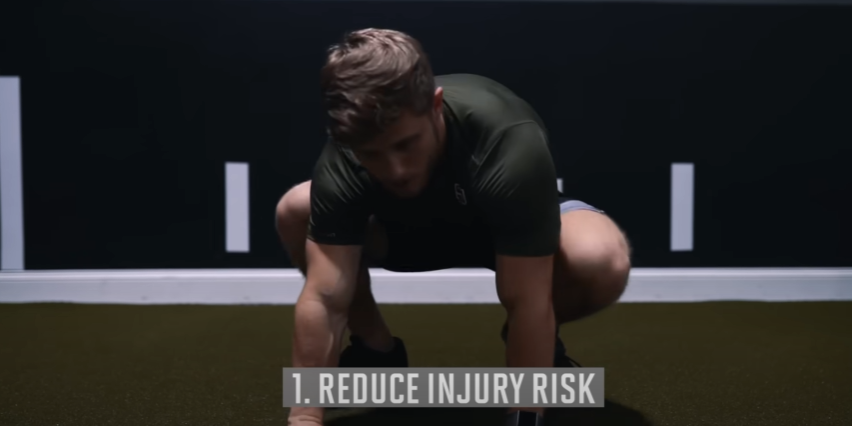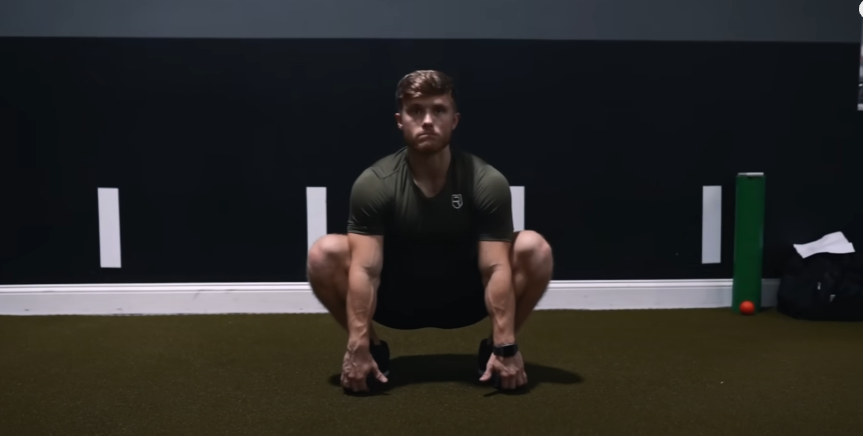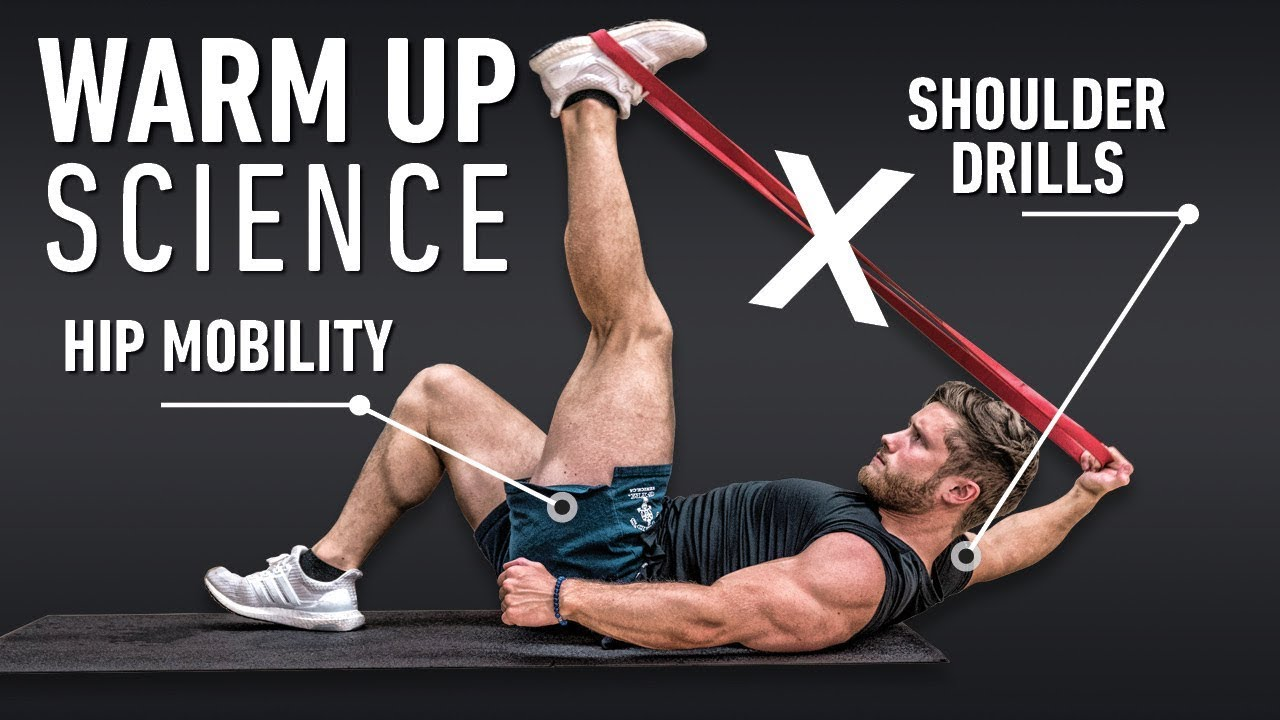Warming up is one of the most overlooked aspects of strength training, yet it plays a critical role in both performance and long-term joint health. A well-structured warm-up not only primes your muscles for heavy lifting but also helps prevent injuries that could keep you out of the gym for weeks.
As a coach with over two decades of experience in bodybuilding and strength training, I can tell you with confidence: a solid warm-up routine is non-negotiable if you want to train hard and stay healthy.

This guide will walk you through a complete upper and lower body warm-up system designed to:
- Increase strength output during training sessions
- Lower the risk of joint and muscle injuries
- Improve range of motion and mobility
- Mentally prepare you for heavy lifting
We’ll divide the process into three essential phases:
- General Warm-Up – raising body temperature and increasing blood flow.
- Dynamic Mobility & Muscle Activation – preparing joints and muscles for the specific movement patterns.
- Progressive Loading – gradually ramping up to your working weight.
Phase 1: General Warm-Up – Raise Your Core Temperature
The primary goal of the general warm-up is simple: get your heart rate up and your muscles warm. Research shows that simply increasing body temperature improves muscle enzyme activity, enhances energy utilization, and primes your nervous system for explosive power.
How to Do It
- Choose any cardio equipment: treadmill (incline walking), stationary bike, or rowing machine.
- Work at a moderate intensity, aiming for a heart rate around 100–120 beats per minute (roughly 55–65% of max heart rate for most lifters).
- Continue for 5–10 minutes, or until you break a light sweat.
If you train early in the morning or in a cold gym, wear a hoodie to warm up faster. Short, high-intensity intervals (20–30 seconds faster pace followed by 60 seconds easy) can also reduce the time needed.
👉 Key Tip: The goal here isn’t calorie burning or cardio conditioning. Stop once you feel warm; you’re now ready to move into mobility and activation work.

Phase 2: Dynamic Mobility and Muscle Activation
This phase preps your joints and muscles for the specific exercises you’ll be performing. Unlike long static stretches, which can temporarily reduce power output, dynamic stretching and active mobility drills enhance performance.
Lower Body Dynamic Warm-Up
- Foam Rolling (Optional but Beneficial)
Spend 2–3 minutes rolling key muscle groups, focusing on areas that feel tight:- Quads – 15–20 seconds
- Glutes and piriformis – cross one leg over the other to target deep hip muscles.
- Upper and lower back – keep abs braced to avoid hyperextending the spine.
- Dynamic Leg Drills (2–4 minutes total)
Perform 10–12 reps of each movement:- Walking lunges – activate glutes, quads, and hamstrings.
- Leg swings (front-to-back) – loosen hamstrings and hip flexors.
- Leg swings (side-to-side) – open up the adductors and groin.
- Step-through glute stretch – pause for 1–2 seconds to engage the hips fully.
- Optional Targeted Mobility Work (If you have specific tightness)
- Sumo Deadlift or Wide Squat Prep: Try the Squat-to-Stand Reach or Cossack squats to open the hips and inner thighs.
- Ankle & Calf Mobility: Slow eccentric calf raises work wonders if stiff ankles limit squat depth.
This entire lower-body mobility sequence should take no more than 4–5 minutes.

Upper Body Dynamic Warm-Up
Upper-body sessions require less time, but warming up the shoulders and activating the rotator cuff is crucial, especially if you bench or overhead press frequently.
Perform the following drills (10–15 reps each):
- Arm Circles – start with small circles, gradually increasing to larger rotations.
- Side-to-Side Arm Swings – loosen the chest and shoulders.
- Band Pull-Aparts – excellent for activating rear delts and improving shoulder stability.
- External Rotations with a Band – specifically targets the rotator cuff.
- Face Pulls (band or cable) – primes the upper back and helps protect the shoulders during pressing movements.
👉 Optional Shoulder Prehab: Wall slides or overhead dumbbell side bends can improve shoulder mobility if you struggle with overhead pressing.
Phase 3: Progressive Pyramid Loading
This step transitions you from warming up into actual lifting by gradually ramping up to your working sets. It’s particularly important for heavy compound lifts.
Why It Works
- Allows you to rehearse technique under progressively heavier loads.
- Activates the nervous system for maximal power output.
- Reduces injury risk by avoiding sudden jumps in weight.
Example: Squat Warm-Up Pyramid
Working Weight: 330 lbs for 3×6
- Empty Barbell (45 lbs) – 10–12 reps
- 135 lbs – 4–5 reps
- 225 lbs – 3–4 reps
- 275 lbs – 1–2 reps
- Working Sets: 330 lbs for 6 reps
👉 Golden Rule: Reduce reps as weight increases to conserve energy. The goal is to be primed, not fatigued, when you start working sets.
For upper-body lifts like bench presses, rows, or pull-ups, 2–3 warm-up sets are usually enough. For isolation exercises (like lateral raises or bicep curls), you can skip this phase entirely.
Time Breakdown
Here’s how long the full warm-up should take:
- Lower Body Days – 10 to 15 minutes
- 5 min general warm-up
- 4–5 min mobility/activation
- 5 min progressive loading
- Upper Body Days – 8 to 12 minutes
- 5 min general warm-up
- 3–4 min mobility/activation
- 2–3 min progressive loading
Key Benefits You’ll Notice
✅ Stronger Lifts: Warming up increases phosphocreatine utilization and muscle fiber recruitment, allowing you to push heavier weights.
✅ Better Mind-Muscle Connection: Taking time to mentally rehearse lifts enhances focus and control.
✅ Lower Injury Risk: Joints and connective tissues are prepared for heavy loading, reducing strain.
✅ Improved Range of Motion: Dynamic stretching keeps you mobile without sacrificing strength.
Can You Shorten the Warm-Up?
If you’re tight on time, here are quick modifications:
- Skip Foam Rolling unless you’re dealing with significant stiffness.
- Focus on only the most relevant dynamic stretches for that day’s workout.
- Choose exercises that don’t require extensive ramp-up sets, such as lunges or Bulgarian split squats.
However, for your main compound lifts, don’t skip the pyramid loading phase. It’s essential for both performance and safety.
Final Thoughts
A proper warm-up isn’t just something “serious lifters” do—it’s a proven method for lifting heavier, building more muscle, and staying injury-free. Follow these three phases consistently, and you’ll notice better performance almost immediately.
Take 10–15 minutes to prepare, and your body will thank you with stronger lifts, faster recovery, and fewer setbacks.



